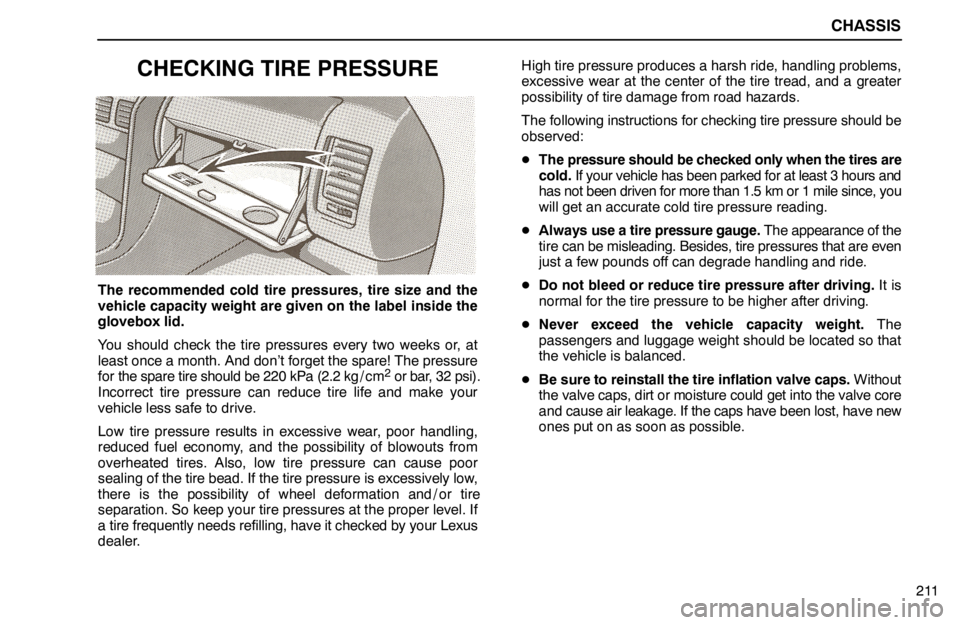CHASSIS
211
CHECKING TIRE PRESSURE
The recommended cold tire pressures, tire size and the
vehicle capacity weight are given on the label inside the
glovebox lid.
You should check the tire pressures every two weeks or, at
least once a month. And don’t forget the spare! The pressure
for the spare tire should be 220 kPa (2.2 kg / cm
2 or bar, 32 psi).
Incorrect tire pressure can reduce tire life and make your
vehicle less safe to drive.
Low tire pressure results in excessive wear, poor handling,
reduced fuel economy, and the possibility of blowouts from
overheated tires. Also, low tire pressure can cause poor
sealing of the tire bead. If the tire pressure is excessively low,
there is the possibility of wheel deformation and / or tire
separation. So keep your tire pressures at the proper level. If
a tire frequently needs refilling, have it checked by your Lexus
dealer.High tire pressure produces a harsh ride, handling problems,
excessive wear at the center of the tire tread, and a greater
possibility of tire damage from road hazards.
The following instructions for checking tire pressure should be
observed:
�The pressure should be checked only when the tires are
cold. If your vehicle has been parked for at least 3 hours and
has not been driven for more than 1.5 km or 1 mile since, you
will get an accurate cold tire pressure reading.
�Always use a tire pressure gauge. The appearance of the
tire can be misleading. Besides, tire pressures that are even
just a few pounds off can degrade handling and ride.
�Do not bleed or reduce tire pressure after driving. It is
normal for the tire pressure to be higher after driving.
�Never exceed the vehicle capacity weight. The
passengers and luggage weight should be located so that
the vehicle is balanced.
�Be sure to reinstall the tire inflation valve caps. Without
the valve caps, dirt or moisture could get into the valve core
and cause air leakage. If the caps have been lost, have new
ones put on as soon as possible.
